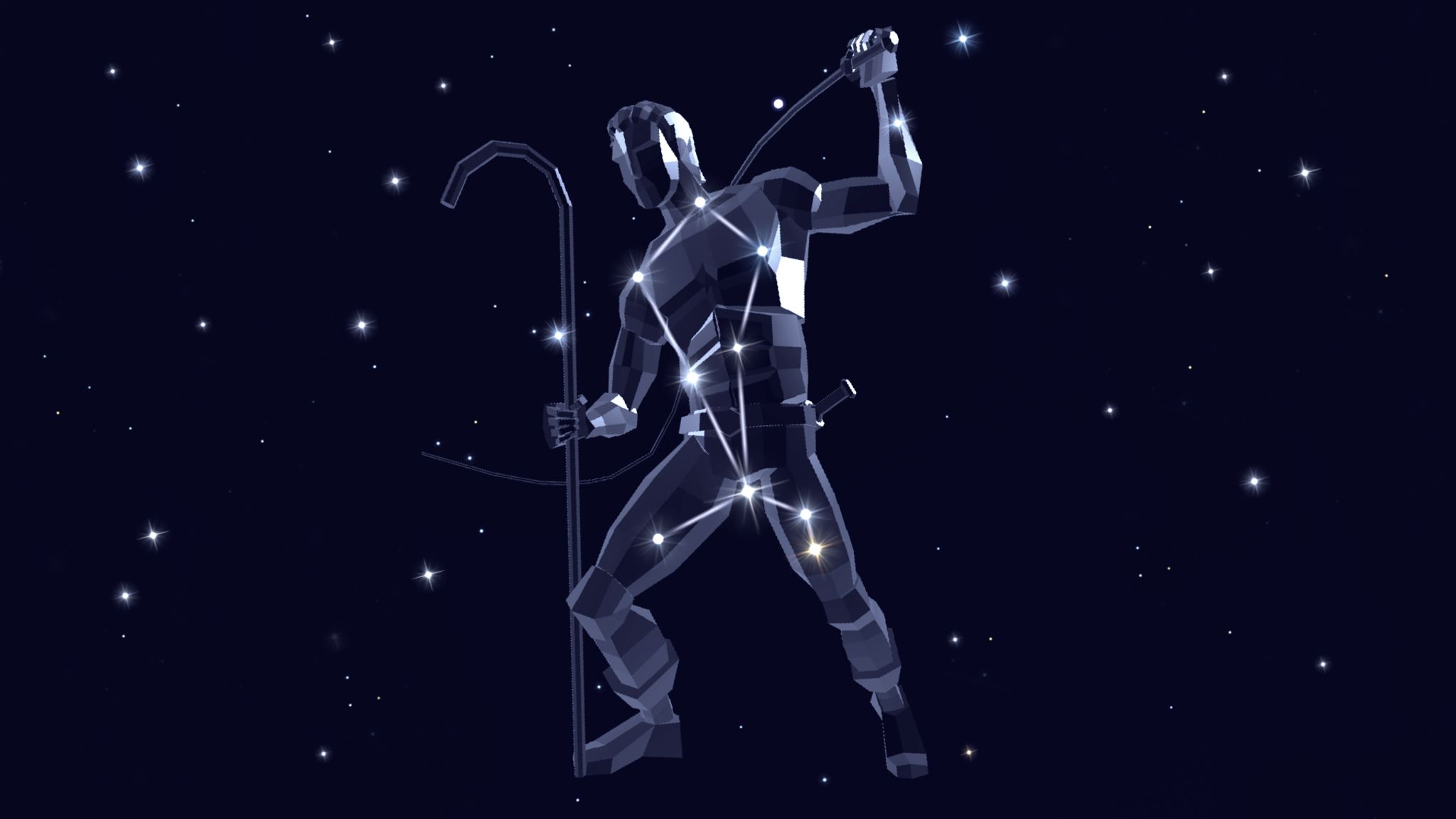The Treats of Bootes
The absent moon for the next two weeks and the lovely early summer nights offer a fine opportunity to explore the realm of Boötes (“Bow-Oh-tees”), the Herdsman or Plowman.
After it gets dark, face southwest and look about halfway up the sky for a very bright, orange-tinted star named Arcturus, which is the fourth brightest star in the entire night sky. Arcturus marks the bottom tip of the large, kite-shaped constellation Böotes, traditionally represented as a Herdsman or Plowman. The rest of the stars in the kite are medium-bright and visible under party light-polluted skies.
About a fist’s diameter above and slightly left (east) of Arcturus are two close-together stars. The higher one named Izar, meaning “Loin Cloth”, is moderately bright. The lower one is much fainter.
Moving another fist’s width upwards along the same line brings us to the Herdsman’s eastern shoulder, a modest star designated Delta Boötis, or Thiba. Thiba is a sun-like star, about ten times the mass of our sun, sitting 117 light-years away. Looking up and to the right about 7.5°, we find a star named Nekkar “Ox Driver”, marking the constellation’s head (or tip of the kite).
Sitting about three finger widths towards the upper left from the line connecting Delta Bootes and Nekkar (shoulder and head) is a triple star named Alkalurops, a name derived from “Shepherd’s Staff”. Two of Alkalurops’ stars can be discerned with good eyes or binoculars, and one of these becomes two stars when viewed in a telescope.
As we head from Nekkar back down the crooked western side of the kite, we first stop at a medium bright star named Seginus, which marks the western shoulder. This 85 light-years distant star is spinning about 70 times faster than our sun!
Moving less than halfway down the constellation towards Arcturus, we find a modest star sitting about four finger widths to the right of Izar. This star, designated Rho (ρ) Boötis, marks the gentleman’s western hip. There’s a noticeable small star just to its left named Sigma Boötis.
Descending from Arcturus to the east and west are some minor stars that mark the legs and feet. The eastern foot, less than a fist’s diameter to the lower left of Arcturus, is designated Zeta Boötis. Moving about four finger widths down the western leg brings us to the bright star Muphrid. It is actually the same distance from us as Arcturus. But its inherent brightness is less, so it looks much dimmer.
Boötes extends way up to the tip of the Big Dipper’s handle. Just before you get there, look for a tight grouping of three stars that represent the herdsman’s upraised hand. The star names are Asellus Primus, Asellus Secundus, and Asellus Tertius “First, second, and Third Donkey”. The famous Pinwheel Galaxy (Messier 101) is located only a few finger widths above them!
Clear skies and happy stargazing!
